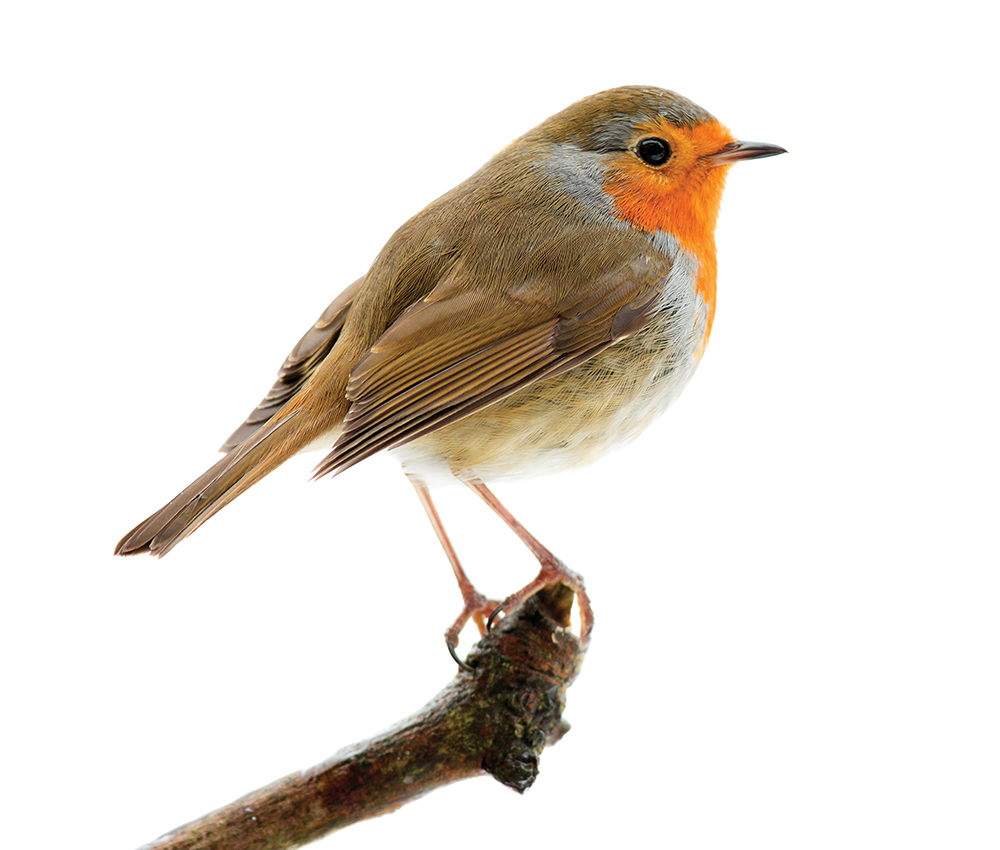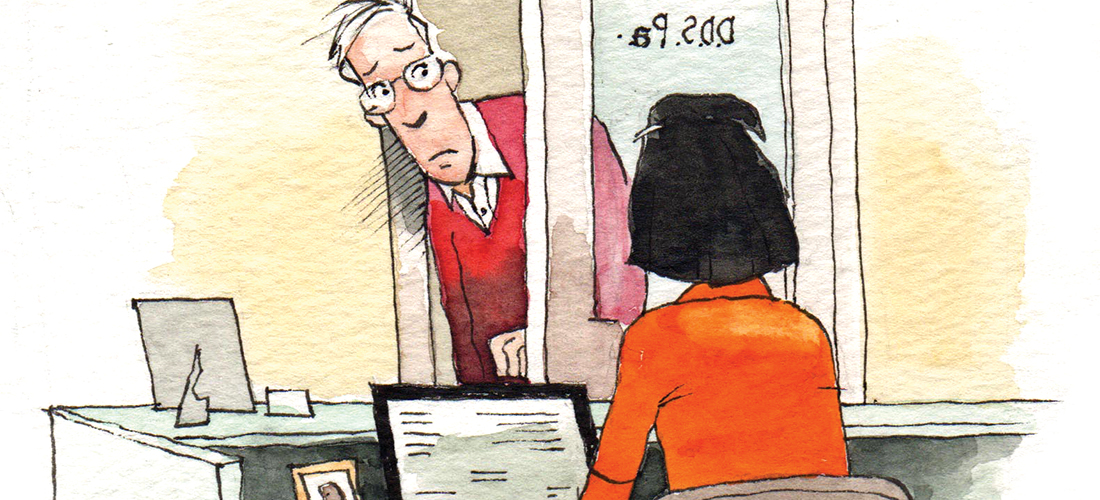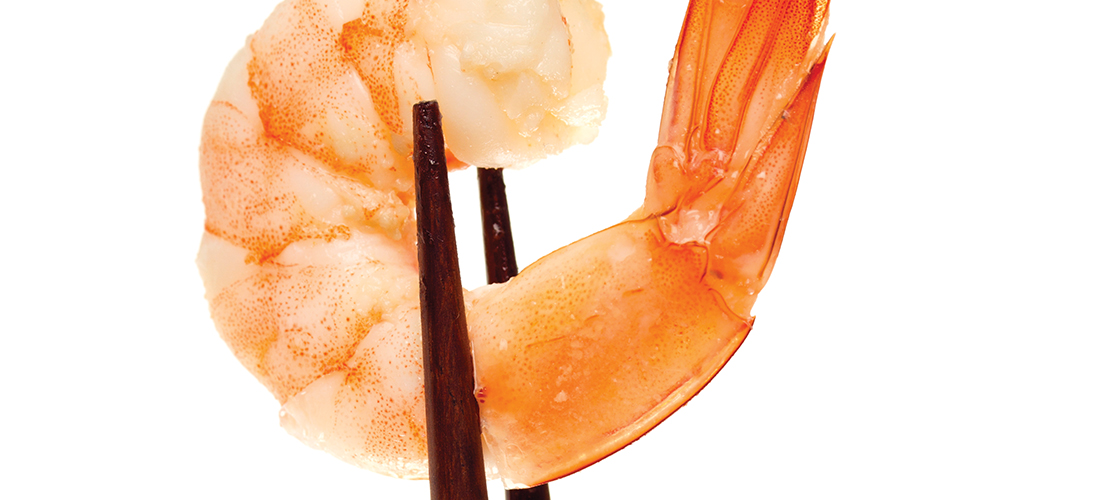Walker Avenue’s Colorful Thread
For its diverse denizens, a spark that begins over a wall of beer or
a ball of yarn inevitably ends with an enduring love affair of the heart
Story and Illustration by Robin Sutton Anders
Roger and Nancy Kimbrough can give you 1,600 good reasons why their customers drive from all over the country to shop at Bestway, the neighborhood grocery store they own on the corner of Walker and Elam — and they can all be found on one 80-foot-long “Wall of Beer.”
“We started with about 450 craft beers in our assortment in 2008,” remembers Roger Kimbrough. “People got so excited and asked if we could get this beer, or that beer.” Following customer requests, the Kimbroughs quickly doubled their inventory to 900. Today, they showcase all 1,600 options on a refrigerator wall organized by geography, eastern North Carolina on one end, California on the other. A vast selection of imports hailing from countries like the Netherlands and Thailand rest on nearby shelving.
High praise from influential critics, such as BeerAdvocate.com and RateBeer.com attract out-of-staters who amend road trips to include a stop at the Walker Avenue institution. Once they shop The Wall and stuff their trunks full of small-batch, quaffable delicacies, they discover what the locals already know: Bestway stands in good company.
If you head over to Walker Avenue — the 2.4 mile stretch that starts on West Market Street, runs through the Lindley Park and Sunset Hills neighborhoods and dead-ends at UNCG’s towering Jackson Library — and ask any of the pedestrians what they’re up to, a good number of them are likely either coming from or making their way to “the corner.”
They’re referring to the intersection of Walker and Elam, where Bestway operates alongside a handful of Greensboro’s most popular bars and restaurants. The road crossing’s not much to look at. Most of the buildings are pretty old and much of the signage feels like your favorite well-worn old shirt — the colorful and tattered pieces are celebrated. Neighbors congregate on the concrete. Musicians settle in to liven the scene. Across the street, dudes high-five their way into Suds and Duds, the “Cheers” of the laundromat world. (A bar in the back with the basketball shooting game Hoop Fever and ten sports-dominated TVs give regulars a reason to collect their dirty socks.)
Right beside Suds, jukebox tunes (and the occasional live performer) from dive bars Wahoo’s and Walker’s filter into the street to mingle with the mix outside. Aromas of, arguably, Greensboro’s best pizza — dough prepared in-house with locally milled, organic flour and topped with fresh seasonal ingredients like Goat Lady chèvre and Bradd’s sweet Italian sausage — waft from
Sticks & Stones’ clay oven. Emma Key’s, a restored 1950s barber shop, serves up thick chocolate shakes and flat-top grilled burgers.
Just down the way, college kids and their out-of-town parents wait for a seat at Fishbones, which serves seafood entrees and inventive daily specials. And across the street, sounds of laughter burst from the back of Lindley Park Filling Station, a casual diner with great soups, salads and sandwiches — and a lush outdoor patio that’s a dream-come-true for neighborhood toddlers with the wiggles.
There’s something infectious about that corner. It draws people from all walks of life and celebrates the intersection of age, education, wealth and race. Neil Reitzel, owner of Fishbones and Sticks & Stones, caught the bug when he walked up to the corner for the first time as a 15-year-old visiting a girlfriend who lived in the neighborhood. “I fell in love with it then,” he remembers. “Lindley Park was so different from my neighborhood, where all the houses were kind of cookie-cutter. My friend and I would walk up to the corner and go to the Bestway, and it was like a throwback in time.”
As soon as he was old enough, Reitzel, along with a buddy, Scott Toben, bought the space between Fishbones and Bestway and opened the Blind Tiger pub, an instant success that soon welcomed acts such as Hootie and the Blowfish — “they played for a crowd of about thirty people,” Reitzel laughs — and Ben Folds Five, who made their musical debut there.
Today, with a business portfolio that includes two of Greensboro’s most successful restaurants, Reitzel continues to believe in the power of Walker Avenue. “I love the people and the diversity. I love the architecture of the houses. There’s so much I really dig about it.”
The corner may be the heart of Walker Avenue, but its strong, steady beat of community, diversity and inclusion reverberates east and west of the Elam intersection.
If you leave the Bestway and walk to your right for a half-mile or so, you’ll pass eclectic, craftsman-style bungalows and student apartments before you get to UNCG’s campus. If you instead walk left, more bungalows line the way to a bridge passing over Wendover; then the Greensboro Arboretum on your right; and eventually, Market Street.
It’s a colorful walk either way you turn. On any day, you’ll be treated to a visual arts display, courtesy of talented Walker residents who leave subtle front-lawn hints of their crafts (“hope” signs hand-painted on wooden clapboard; metallurgy, including an intricate sculpture of two kids sitting on a tree bench; music lessons; handcrafted Adirondack chairs). On Saturdays, the corner farmers’ market at Walker and Elam plays host to live music and vendors selling veggies, meat, fish, baked goods, and crafts. And seasonally, the arboretum’s trees and flowers update their botanical show.
One year ago, Walker’s local color landed on a not-so-subtle, unlikely canvas. Neighbors blanketed every square inch of the cold, steel bridge railings that cross over Wendover Avenue with colorful knitting. “I never liked that bridge,” says Kathy Newsome, who lives one street back from Walker and used to drive her kids to the arboretum so they wouldn’t have to ride their bikes over the bridge. “The railings are so low, it feels dangerous. But it still seemed silly to drive them in a car when the arboretum was really only a block from our house,” she says. “Plus, it was a real divider in our neighborhood.”
Lindley Park officially extends all the way down Walker Avenue and over the bridge to encompass the homes surrounding the arboretum. But, Newsome says, residents on the other side of the bridge didn’t feel as much a part of the neighborhood. “You’ll always hear people say, ‘I live in Lindley Park, but I live on the other side of the bridge.”
Newsome had an idea to erase the “but.”
“Nobody knew what a yarn bomb was,” she says. “Even the people from ‘Building Stronger Neighborhoods’ didn’t know, but they approved my grant. Suddenly I had to get it done in three months!”
Newsome set up a booth at the farmers’ market, complete with wicker chairs and baskets of yarn and knitting needles. “I told people that I’d teach them how to knit if they’d help me,” she says. Newsome figured she needed seventy-seven 7-foot-long scarves in order to completely wrap the railings of the bridge with colorful yarn. After three months, she and her cohorts had enough scarves to blanket not only the guardrails but also the trees on either side of the bridge.
“I initially wanted this to be a neighborhood connector, but it extended far beyond that,” she recalls. “People really got on board. In the knitting booth, I would teach one person to knit, and that person would teach the next person to come along. So we had 12-year-olds teaching 60-year-olds. In the end, 200 people volunteered their time to knit.”
After every color of the rainbow — and knitted letters spelling out “COMMUNITY” — warmed the once-chilly guardrails, Newsome loved to walk across her neighborhood bridge. “It was cold in November, but there were always people out there taking pictures and cars honking when they’d drive under it on Wendover,” she says. “Suddenly this yucky bridge that goes over six lanes of traffic was something to care about, something to notice.”
This spring, Walker Avenue’s bridge is getting a facelift in the form of higher, pedestrian-friendly railing. It’s all thanks to a vote from the district requesting a safer bridge for their community, for their children. “The reason people voted for it over other projects was because they were aware that there even was a bridge,” Newsome says. “They realized that bridge had value.”
Stich by stitch, Newsome’s project connected novices and apprentices, young and old, newcomers and old-timers, bringing her neighbors together. Stitch by stitch, her neighbors constructed a more inclusive, safer street.
That’s the kind of neighborhood Walker Avenue residents want — one that understands all neighborhoods are knit together and that in the very best neighborhoods, the entire community provides the yarn that binds. After all, it takes the whole palette to make a rainbow. OH
Robin Sutton Anders is a Greensboro-based freelancer who is proud to call Lindley Park home.












